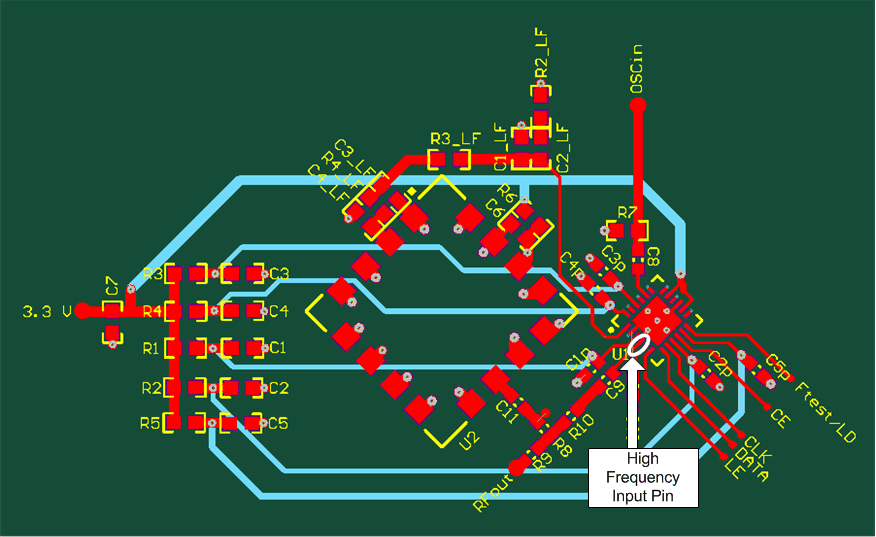SNAS324B January 2006 – January 2016 LMX2486
PRODUCTION DATA.
- 1 Features
- 2 Applications
- 3 Description
- 4 Revision History
- 5 Pin Configuration and Functions
- 6 Specifications
- 7 Parameter Measurements Information
-
8 Detailed Description
- 8.1 Overview
- 8.2 Functional Block Diagram
- 8.3 Feature Description
- 8.4 Device Functional Modes
- 8.5 Programming
- 8.6
Register Maps
- 8.6.1 R0 Register
- 8.6.2 R1 Register
- 8.6.3 R2 Register
- 8.6.4 R3 Register
- 8.6.5
R4 Register
- 8.6.5.1 MUX[3:0] Frequency Out and Lock Detect MUX
- 8.6.5.2 IF_P -- IF Prescaler
- 8.6.5.3 RF_CPP -- RF PLL Charge Pump Polarity
- 8.6.5.4 IF_CPP -- IF PLL Charge Pump Polarity
- 8.6.5.5 OSC_OUT Oscillator Output Buffer Enable
- 8.6.5.6 OSC2X -- Oscillator Doubler Enable
- 8.6.5.7 FM[1:0] -- Fractional Mode
- 8.6.5.8 DITH[1:0] -- Dithering Control
- 8.6.5.9 ATPU -- PLL Automatic Power Up
- 8.6.6 R5 Register
- 8.6.7 R6 Register
- 8.6.8 R7 Register
- 9 Application and Implementation
- 10Power Supply Recommendations
- 11Layout
- 12Device and Documentation Support
- 13Mechanical, Packaging, and Orderable Information
パッケージ・オプション
メカニカル・データ(パッケージ|ピン)
- RTW|24
サーマルパッド・メカニカル・データ
- RTW|24
発注情報
11 Layout
11.1 Layout Guidelines
The critical pin is the high freqeuncy input pin that should have a short trace. In general, try to keep the ground and power planes 20 mils or more farther away from vias to supply pins to ensure that no spur energy can couple to them.
11.2 Layout Example
 Figure 27. Simplified Layout for Only RF PLL Used
Figure 27. Simplified Layout for Only RF PLL Used